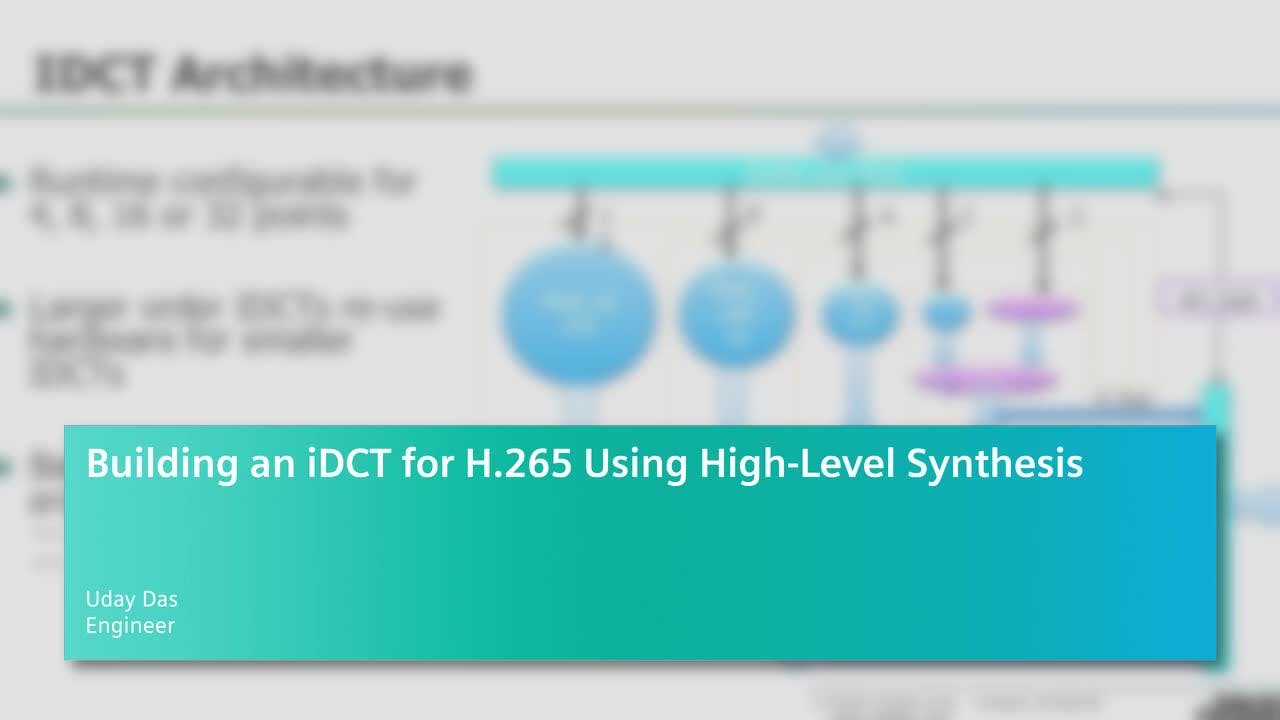High-Level Synthesis (HLS), has been adopted by leading companies to speed design time and reduce verification costs in applications such as video and image processing, 4/5G wireless, and high bandwidth advanced communications designs (i.e. optical communications processors).
But when deciding to use HLS for the first time, designers have many questions:
- What does high level synthesis code look like for an algorithmic
block? - How do I optimize it, and do I have enough control to get the design
I want? - Will the QoR be good?
- How do I verify and debug the RTL?
- Should I use SystemC or C++?
This technical tutorial explores these questions and more using an
iDCT for H.265 as a specific example.
What you will learn:
- What High-Level Synthesis code look like for an algorithmic block
- How to optimize HLS code and the level of control in the design
- What the QoR will look like
- How to verify and debug the RTL
- Whether SystemC or C++ should be used
Who should attend:
- RTL designers interesting in moving up to HLS with C/C++/System
based design flow to improve productivity - RTL Design Manager/Project leaders who want to better understand
what it will take and the potential benefit for the next project to
move to HLS - Verification Managers who want to understand the design and
verification flow using HLS


